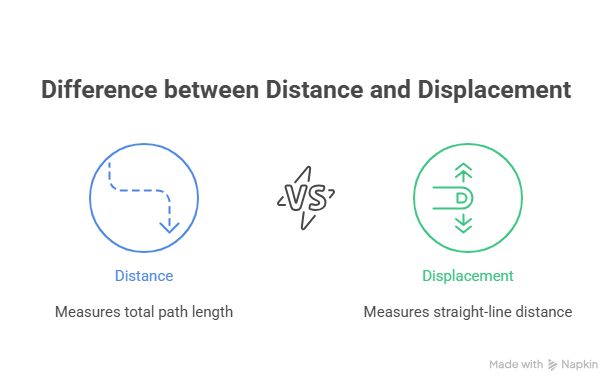
Chapter 2: Measurement Techniques
Chapter 2, Subtopic 1: Distance, Displacement, Speed, and Velocity
What’s the Difference Between Distance and Displacement?
Distance is simply how much ground you’ve covered, no matter which way you went. It’s a scalar quantity, which means it only cares about “how much,” not “which way.”
Displacement is about your overall change in position: where you started versus where you ended up, and in what direction. It’s a vector quantity, so direction matters!

Example 1:
If you walk 3 meters east and then 4 meters north, your total distance is 3 + 4 = 7 meters. But your displacement is the straight-line distance from your starting point to where you ended up—if you draw it, you get a right triangle. (Use Pythagoras: √(3² + 4²) = 5 meters, pointing northeast.)
Example 2:
If you run a full lap around a track and stop exactly where you started, maybe you ran 400 meters—so your distance is 400 meters. But your displacement? Zero! You finished back at the starting point.
Speed vs. Velocity: What’s the Big Deal?
Speed tells you how fast you’re going (distance over time). It doesn’t care about direction—only “how much ground per second/minute/hour.”
.png)
Velocity is a fancier version of speed that considers direction too. If you drive north at 50 km/h, your speed is 50 km/h, and your velocity is also 50 km/h north.
.png)
- Speed = distance ÷ time
- Velocity = displacement ÷ time
Example 3:
If you cycle 10 km east in 30 minutes:
- Your speed = 10 km / 0.5 hr = 20 km/h
- Your velocity = 20 km/h east

